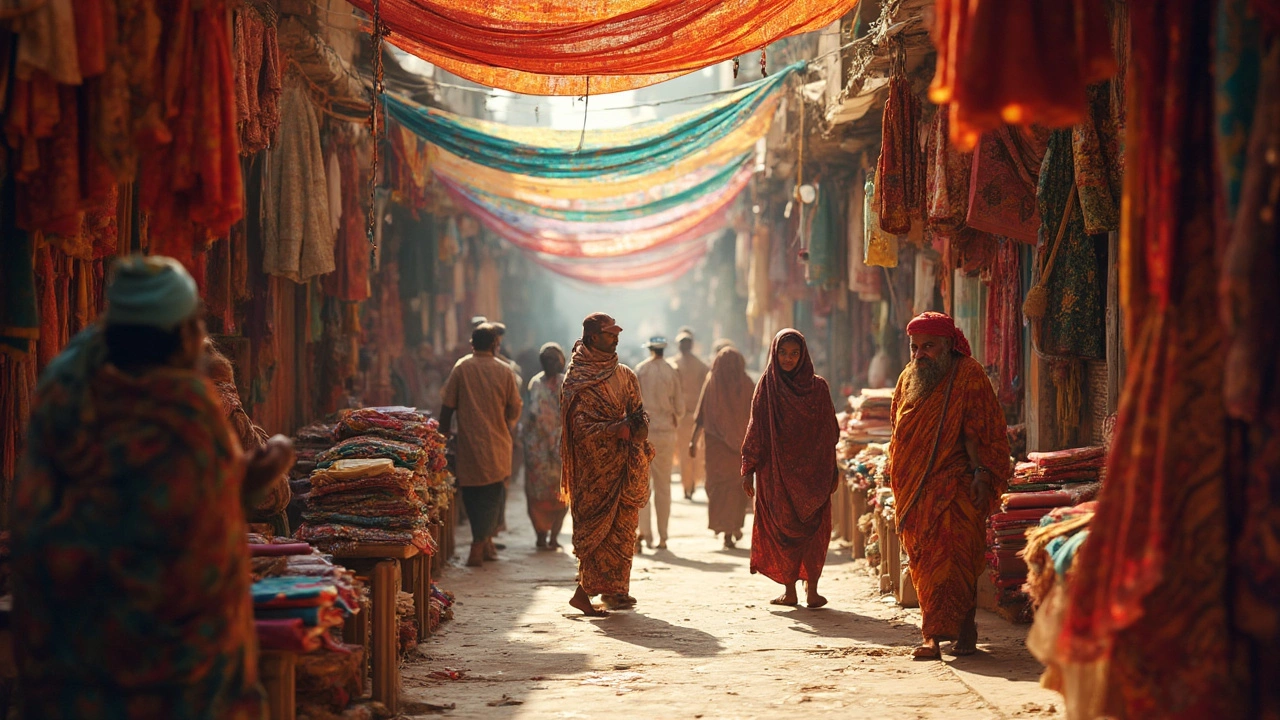- Top Car Brands Manufactured in India: The Complete 2025 Guide Aug 4, 2025
- Where to Find the Cheapest Electronics: Best Countries for Tech Bargains Jul 6, 2025
- Is AbbVie owned by Abbott? - Unraveling the corporate link between two pharma giants Oct 20, 2025
- Which Metal Is the Strongest on Earth? - Facts for Steel Makers Oct 15, 2025
- Number One Selling Item in Manufacturing: Insights and Ideas Nov 28, 2024
Why India Is the Textile Capital of the World
When you hear the term “textile capital,” India instantly comes to mind. The country produces more than 70 percent of the world’s cotton and has an ancient tradition of silk, wool, and hand‑loom fabrics. Today, modern mills sit side by side with village artisans, creating a mix that fuels both mass markets and niche luxury segments. If you’re looking to source fabric, set up a plant, or simply understand the market, the facts below are worth your time.
What makes India a textile powerhouse?
First, the raw material base is unbeatable. Vast cotton fields in Gujarat, Punjab, and Maharashtra guarantee a steady supply at competitive prices. Add to that the booming synthetic yarn output from Tamil Nadu’s industrial zones, and you have a complete fiber portfolio in one country.
Second, the labor pool is huge and skilled. Millions of workers know how to spin, weave, and finish fabric, from high‑speed machines to hand‑loom techniques that have been passed down for generations. This mix of tech‑savvy and traditional skills lets manufacturers switch between cost‑effective bulk production and premium hand‑crafted pieces without missing a beat.
Third, policy support keeps the sector growing. Government schemes like the Technology Up‑gradation Fund (TUFS) and the Production‑Linked Incentive (PLI) for textiles reduce capital costs and push firms toward eco‑friendly processes. The result is lower energy use, better waste management, and more attractive products for export markets.
Spotlight on high‑value fabrics
Not all Indian textiles are made equal. Some fabrics command premium prices because of rarity, craftsmanship, or the story behind them. Take Banarasi silk from Varanasi – a weave that takes weeks to finish and features gold‑thread work. Or the Pashmina shawls from Kashmir, where the fine goat‑hair fibers are hand‑spun and hand‑woven. These items often fetch higher margins and attract global luxury buyers.
If you’re a buyer, look for certifications like the Global Organic Textile Standard (GOTS) or the Silk Mark that guarantee authenticity. Knowing the source helps you avoid fake products and build trust with your own customers.
For manufacturers wanting to step into the premium segment, investing in modern looms that can handle intricate patterns while preserving the hand‑crafted feel is key. Many small workshops are now blending traditional designs with digital printing, opening up new price points without losing the heritage appeal.
In practical terms, start by mapping out the hubs that match your product goals. Gujarat and Maharashtra dominate cotton mills, while West Bengal and Uttar Pradesh lead in silk production. For synthetic blends, Tamil Nadu’s industrial parks are the go‑to locations. Visiting nearby clusters gives you a feel for the supply chain, labor rates, and quality control practices.
Finally, keep an eye on export trends. The United States, Europe, and the Middle East are the top buyers of Indian fabrics, especially the high‑value varieties. Understanding their market requirements – such as colorfastness, sustainability certifications, and lead‑time expectations – will help you position your product correctly and negotiate better terms.
India’s status as the textile capital isn’t just a label; it’s backed by raw material abundance, skilled labor, supportive policies, and a growing portfolio of luxury fabrics. Whether you’re sourcing bulk cotton or chasing niche silk, the country offers a balanced ecosystem that can meet almost any textile need.
Exploring India's Textile Hub: Unveiling the World Capital
- Aarav Sekhar
- Mar 26, 2025
Discover why India is often hailed as the textile capital of the world. This exploration dives into the historical significance, modern advancements, and economic impact of India's flourishing textile industry. With insights on major manufacturing hubs like Surat and Tiruppur, the piece also highlights challenges and forward-looking trends in sustainable practices. Whether you're an industry insider or a curious reader, this article sheds light on India's vital role in the global textile landscape.
